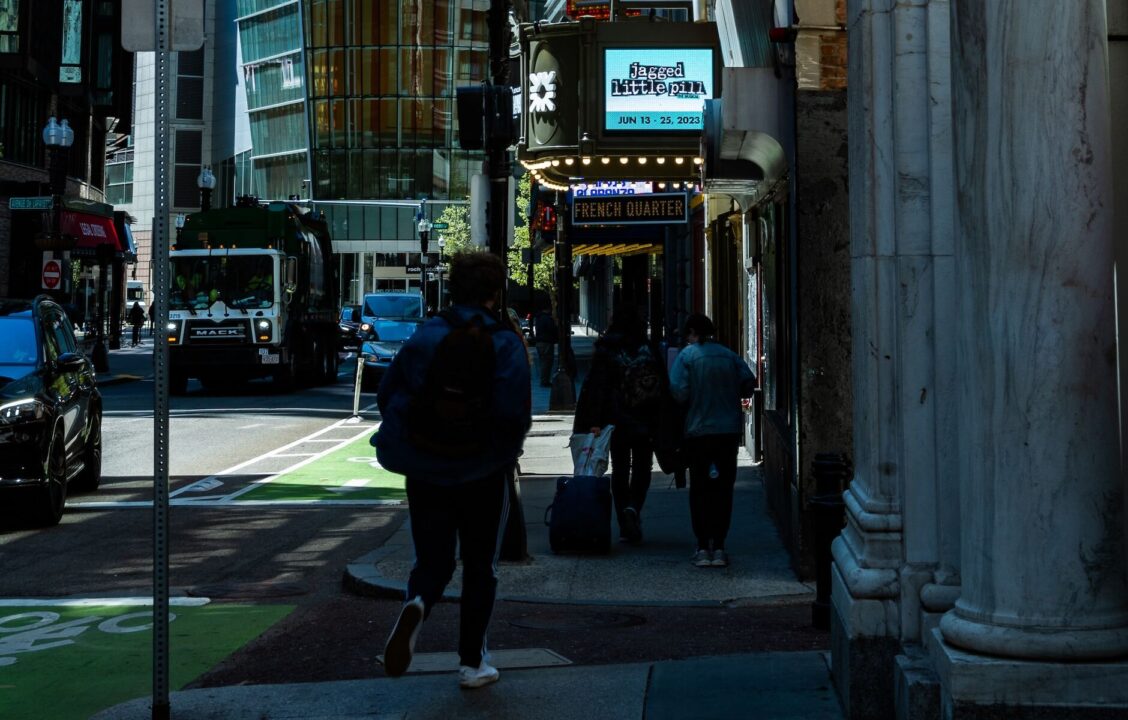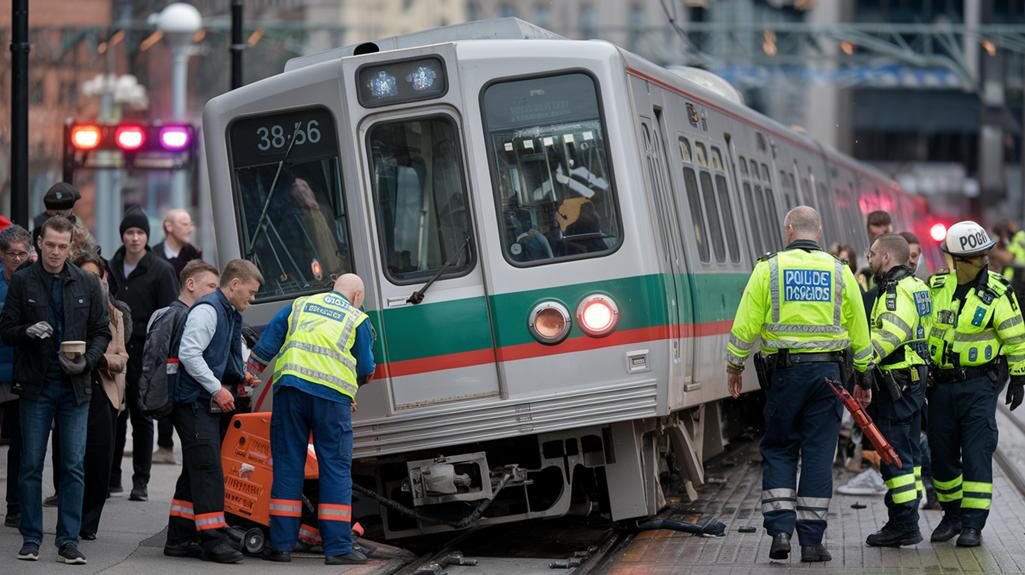 Boston is a city of historic, financial, and cultural significance and is also home to over 600,000 people. It goes without saying that there is a constant flow of traffic constantly occupying the roads and sidewalks of the lively state capital.
Boston is a city of historic, financial, and cultural significance and is also home to over 600,000 people. It goes without saying that there is a constant flow of traffic constantly occupying the roads and sidewalks of the lively state capital.
The hustle and bustle of a major city like Boston raises the question of road safety, especially for the relatively vulnerable pedestrians in a city with some of the worst vehicle traffic in the nation. You can protect yourself by learning more about Boston’s road conditions as they pertain to pedestrians and the steps you should take after an accident.
How Common Are Pedestrian Accidents in Boston?
As part of its “Vision Zero” project, the City of Boston provides a crash map that shows historical accident data for all dates since its implementation. According to this crash map, there were 357 pedestrian crashes and 6 accident-related pedestrian fatalities in Boston for the year 2021.
While any amount of fatalities can be cause for alarm, these statistics might inspire some relief in Boston citizens when compared to numbers from other major U.S. cities with similar populations. Portland, Oregon, for example, saw 27 pedestrian deaths due to traffic accidents in 2021 according to a crash report from the Portland Bureau of Transportation.
The Governors Highway Safety Association estimates 7,485 pedestrian deaths in traffic accidents across the entire nation for the year 2021. Individual cities contribute a very small percentage to this statistic, with Boston being a particularly minor factor overall.
Boston tends to be a relatively safe city for pedestrians due to its traditional layout and small, winding streets. Despite Boston’s natural inclination toward pedestrian safety, however, there are still constant dangers to be aware of and measures you should take to further safeguard your own well-being as a pedestrian.
What Are the Most Dangerous Roads in Boston?
Certain roads may be inherently more dangerous for pedestrians due to a number of factors. Poor road conditions, a high likelihood of accidents and frequent speeding drivers all make for a hazardous environment for people walking along the roadside. Being familiar with the most dangerous streets and intersections in Boston can help you exercise the appropriate amount of caution.
Myrtle Street
Myrtle Street is a relatively short stretch of road near downtown Boston, but one that is difficult to navigate especially for larger vehicles. This street is also in a tourism-heavy area of the city, meaning that roads and sidewalks are often host to crowds that can confuse or aggravate drivers.
Harvard and Morton Intersection
The intersection of Harvard and Morton Streets is a prominent crossing in the southern reaches of Boston. The lack of bicycle lanes and the amount of traffic entering and leaving the residential area contribute to a higher possibility of pedestrian accidents.
Water Street
Water Street is a historic road positioned between the airport, city hall, the waterfront and the Boston Common. Its central location, as well as its nature as an old winding road, make it dangerous for drivers and pedestrians alike. Motorists might be unfamiliar with driving on this type of road and may suffer from poor visibility around the frequent curves.
What Are the Common Causes of Pedestrian Accidents?
Traffic in Boston often necessitates parking in an available garage, sometimes several blocks from your actual destination. This means that everyone living or visiting the Boston area needs to be aware of the risks you might face as a pedestrian. There are some particularly common causes of pedestrian accidents to consider, including:
- Speeding vehicles and the possibility that drivers will lose control on Boston’s unpredictable roads when exceeding the speed limit
- Drivers failing to check the crosswalk before turning at an intersection, as well as not watching the sidewalk for pedestrians attempting to enter the crossing
- Distracted driving, which may include texting, conversing with passengers or eating while behind the wheel
- Careless parking lot behavior such as typing directions into a GPS app while moving or not watching for pedestrians emerging from between vehicles
Drivers have an obligation to exhibit good habits and observe safe procedures while operating a vehicle so that other motorists and pedestrians can remain safe at all times. However, pedestrians also carry some of the burdens in maintaining good practices for their own safety as well as the safety of others.
How Can Pedestrians Be Safer?
The most basic safety consideration when walking is to always use the sidewalk when available or, if there is no sidewalk, to walk facing traffic while remaining as distant from moving vehicles as possible. It is also always best to cross the street at a marked crosswalk, but you can remain relatively safe in areas without crosswalks by finding a location with relatively less traffic and clear views in both directions.
Be careful about walking alongside busy roads after consuming drugs or alcohol. Though walking while impaired is not a crime in the same sense as a DUI offense, doing so can affect your judgment and lead to a catastrophic accident.
Another scenario to avoid when possible is walking at night. Though Boston has many well-lit streets, there is no denying that there is an inherent danger to walking near the roadways when drivers have lower visibility. If you do decide to walk at night, consider wearing brightly-colored clothing if possible.
Alertness is ultimately the most crucial key to pedestrian safety. You should strive to remain aware of your surroundings through both sight and sound. If you prefer to wear headphones while walking to your destination, consider removing them when passing through especially busy areas or listening at a low volume.
Is Riding a Bicycle Safer Than Walking?
Riding a bicycle is a preferable alternative to walking for many people who wish to avoid congested motor vehicle traffic while also reaching their destinations quickly. For many other people, biking is simply a fun activity and an enjoyable way to get around.
Choosing to ride a bicycle is rarely a safer decision than walking, however. There are areas where biking on the sidewalk is illegal, and doing so in any area entails the risk of hitting a pedestrian. This means that bicyclists often occupy areas much closer to moving motor vehicles.
That said, the city of Boston sports 59 miles of off-street bike-friendly paths as well as 17.5 miles of separated bike lanes as of September 2022. While riding a bicycle is not always an ideal safety alternative to walking, Boston residents can enjoy an environment that is relatively accommodating to cyclists.
What Should You Do After a Pedestrian Accident?
If you suffer personal injuries in a motor vehicle accident as a pedestrian, your first priority is your own health and well-being. You should immediately seek medical attention after an accident even if you do not notice any pain or injuries right away. After verifying your condition, you can take steps to document the accident and begin the personal injury claim process.
It is always a good idea to involve an accident attorney early on when pursuing compensation for your pain and suffering. Your lawyer can help you understand your rights and provide guidance through the complexities of negotiating with insurance companies and securing a favorable settlement. Contact us today for a free, no-obligation consultation.
Not Trusting What You’re Being Told?
Better Phone Stone
800-577-5188
 START MY NO OBLIGATION CONSULTATION
START MY NO OBLIGATION CONSULTATION








